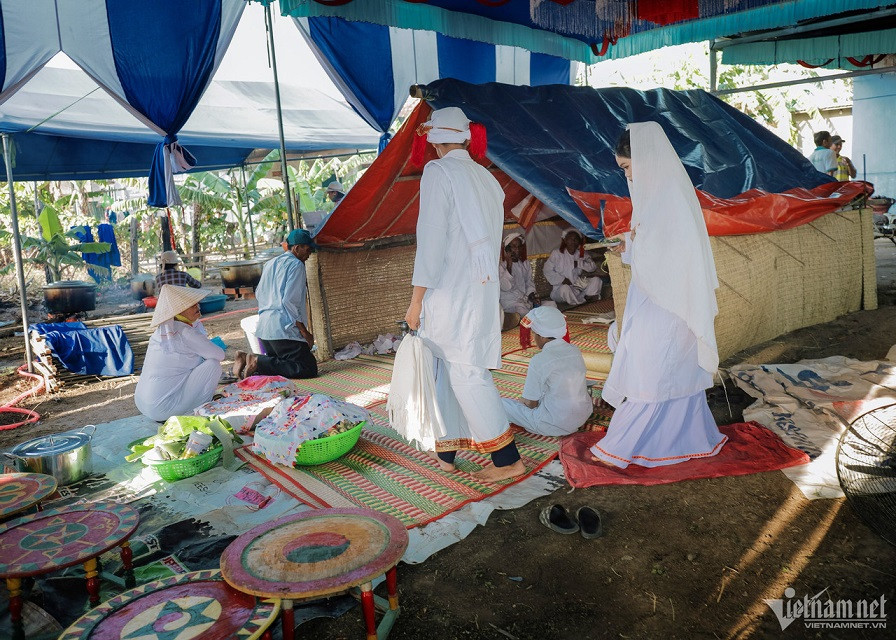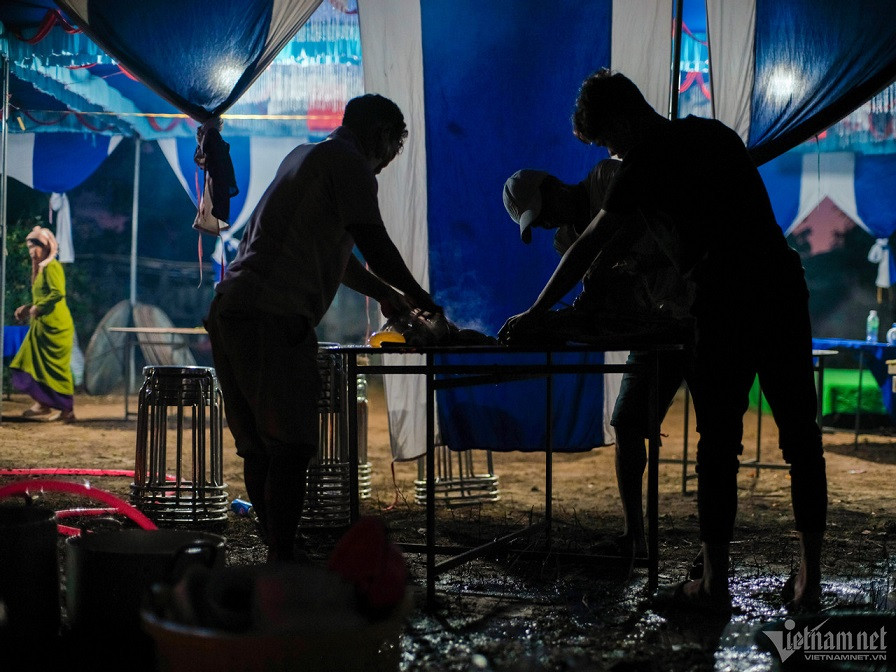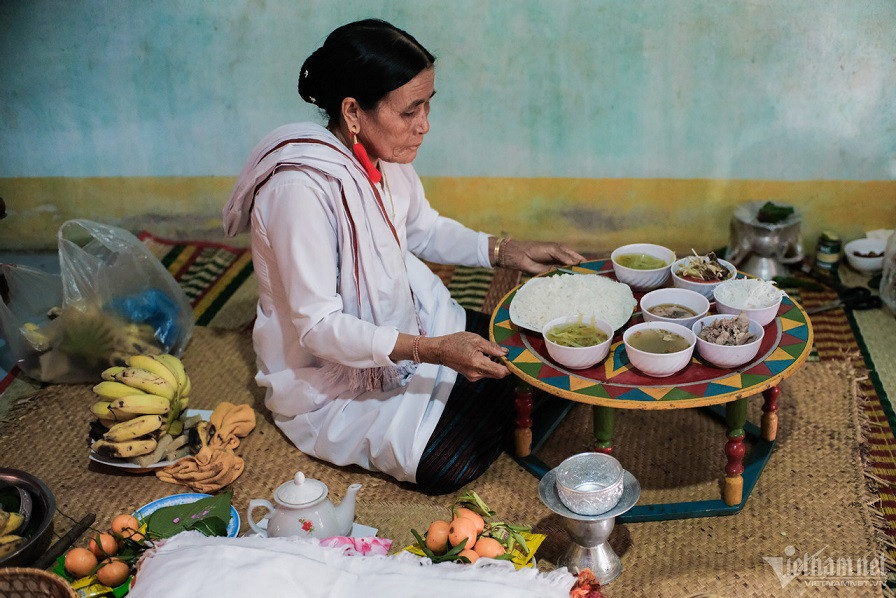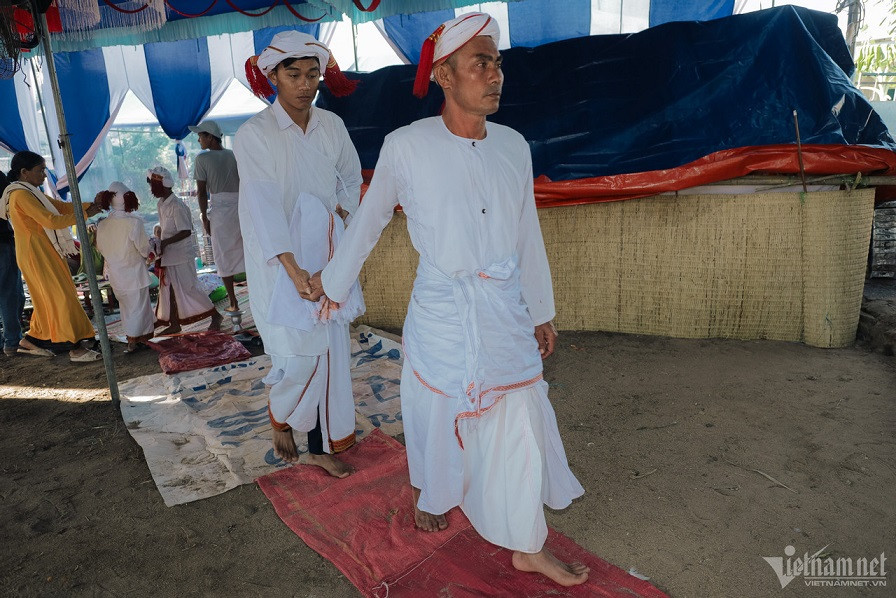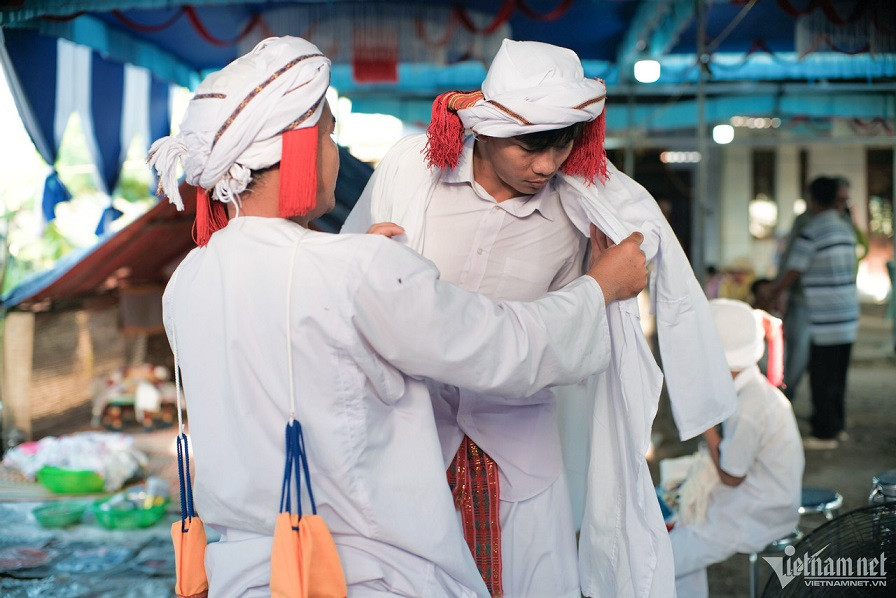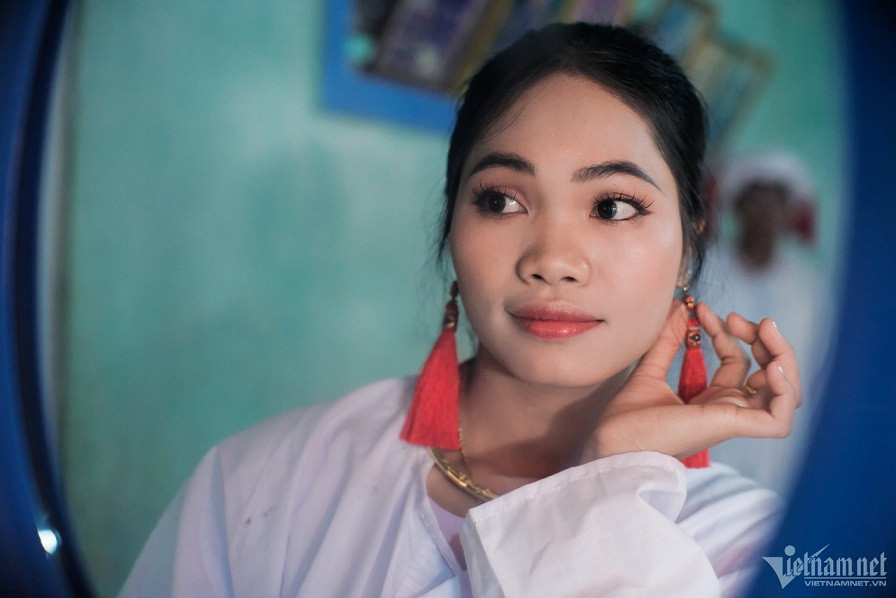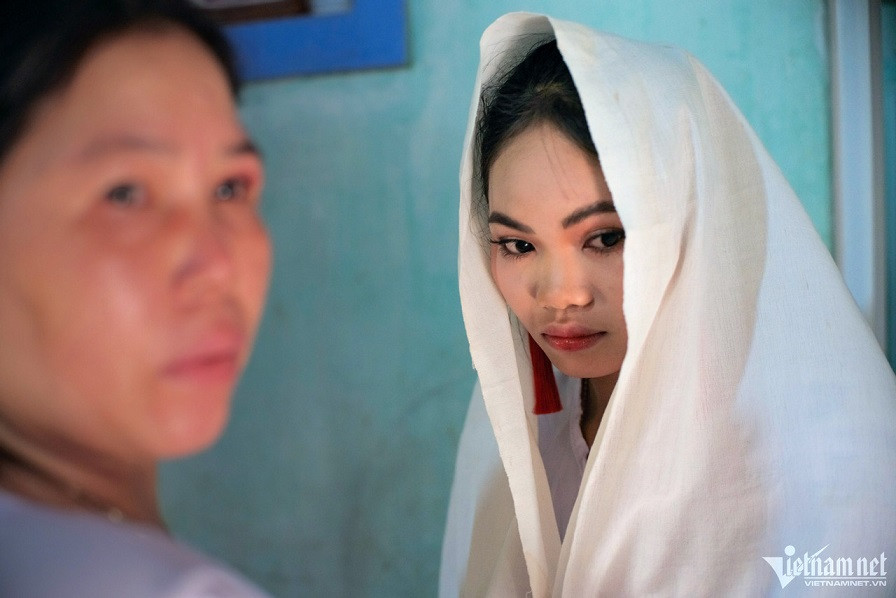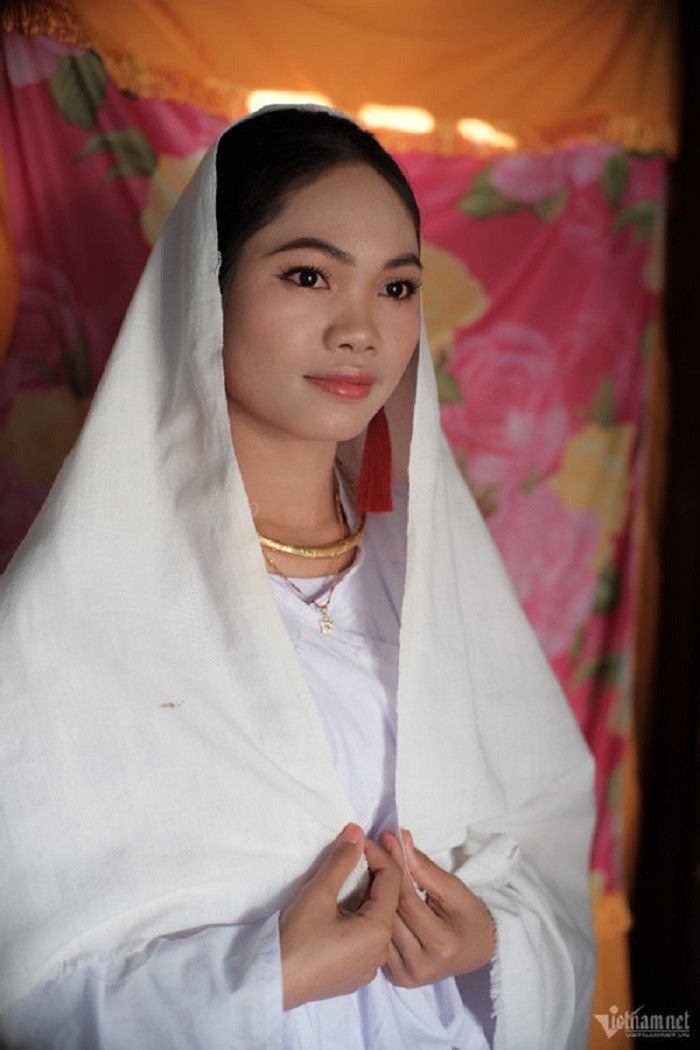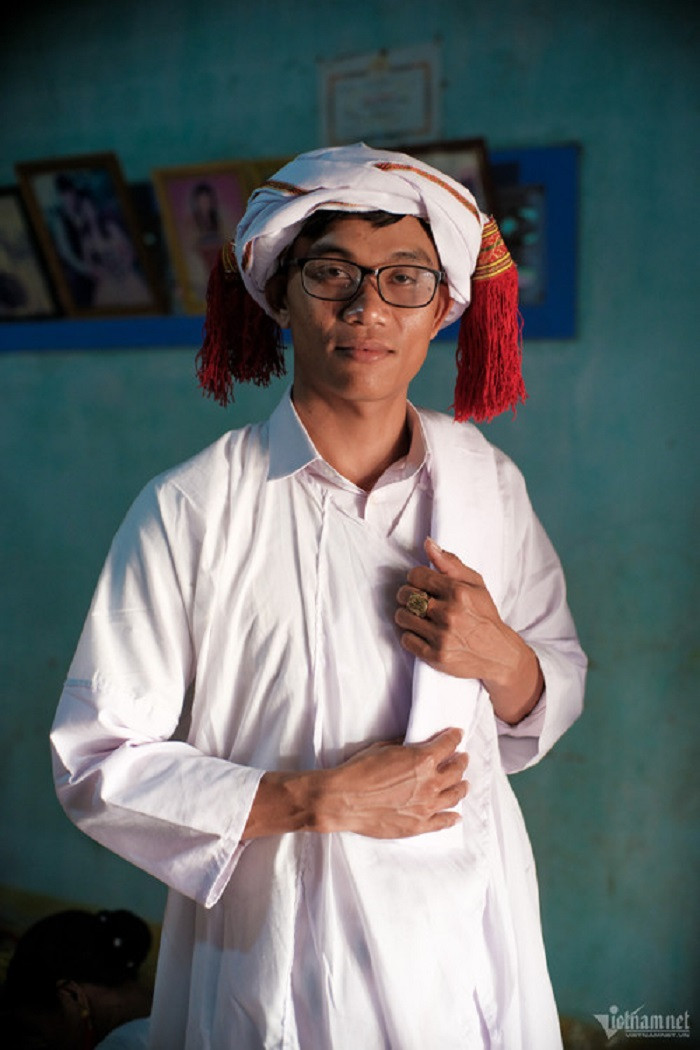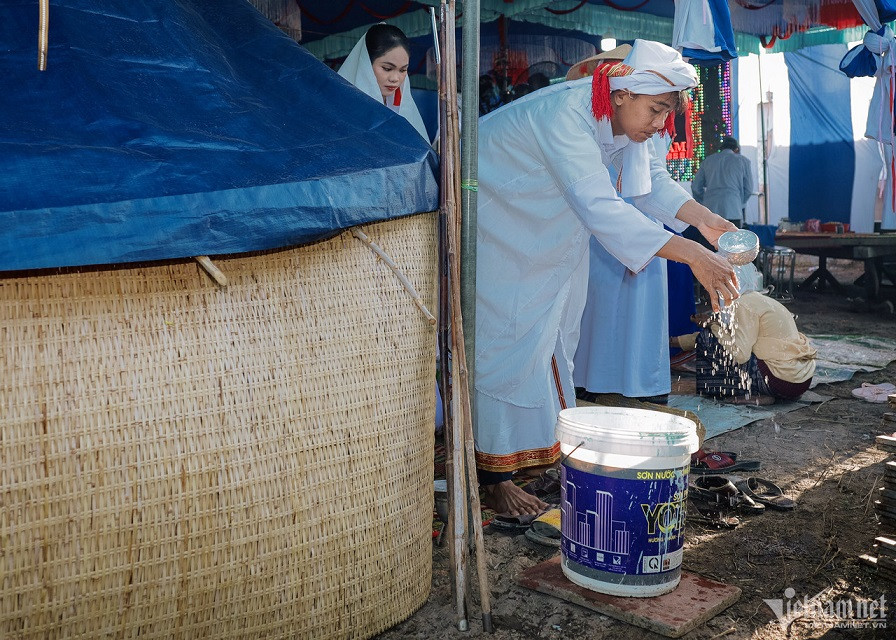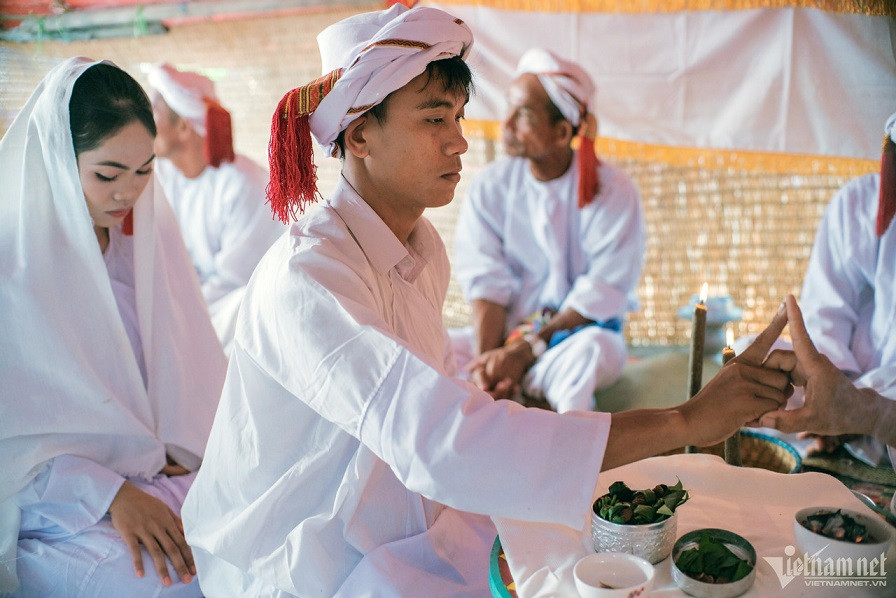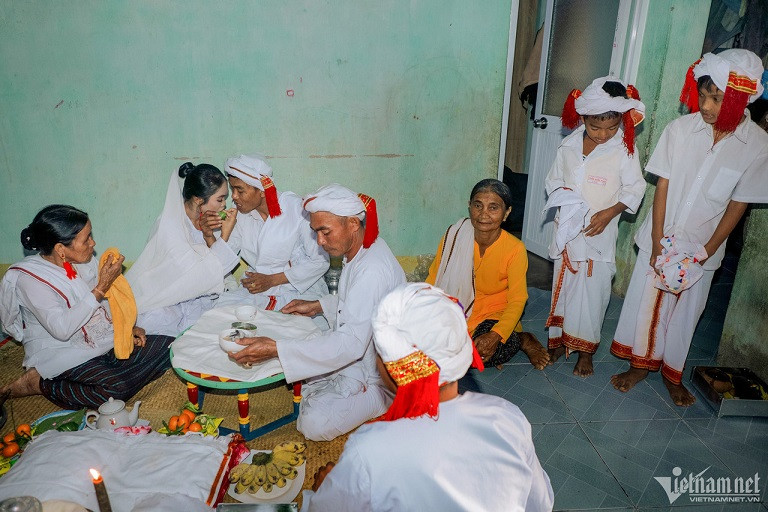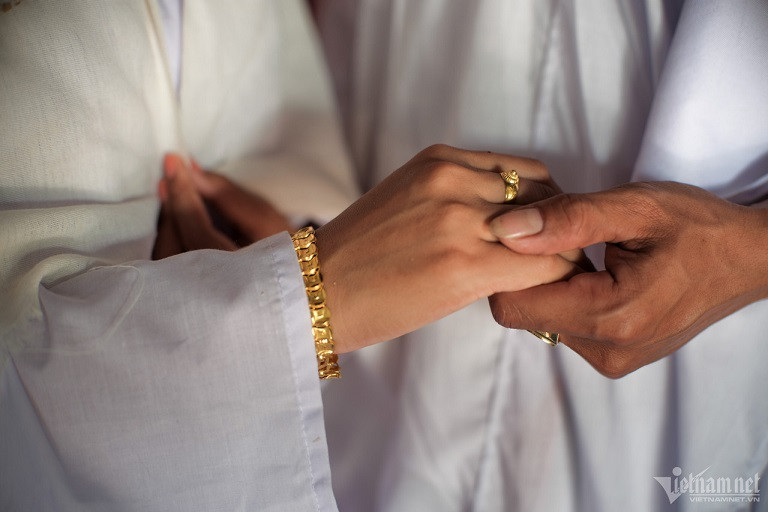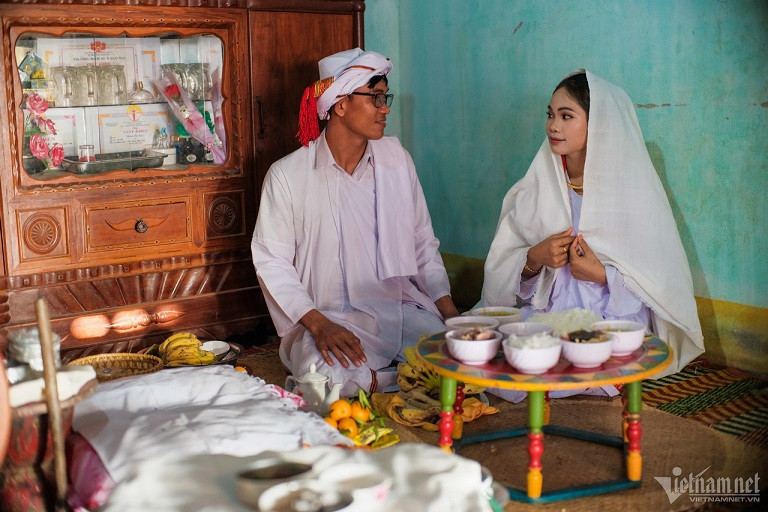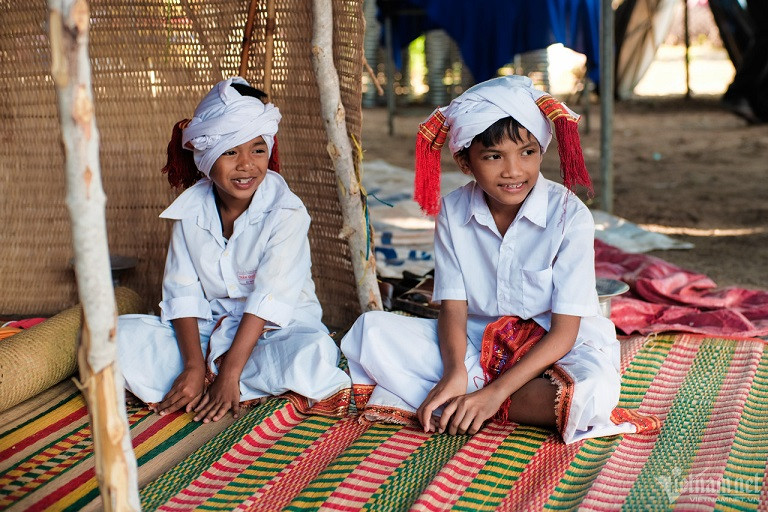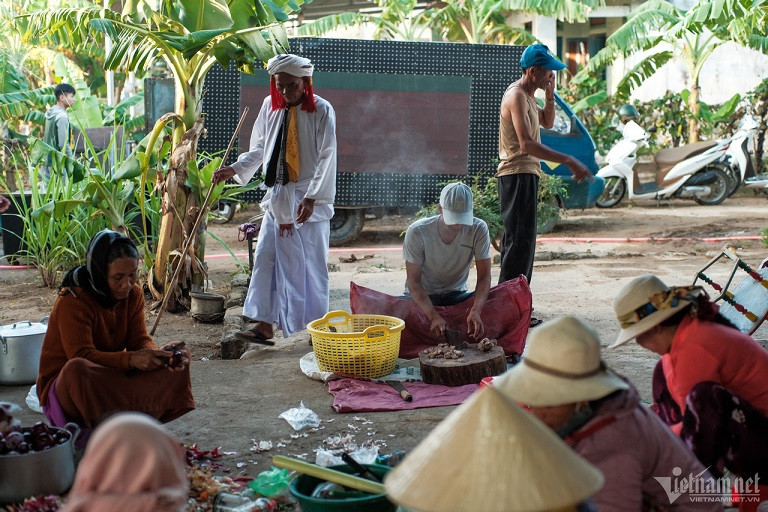The Cham Ba Ni people in Phan Rang (Ninh Thuan) still maintain matriarchy. If someone's marriage wants to be recognized by the villagers, they must hold a traditional wedding ceremony (Dam Likhah or Dam Bbang Munhum in Cham language), where they are blessed by the eldest monk and dignitaries in the village. The wedding custom of the Cham Ba Ni people demonstrates the important role of women in the matrilineal system with the right to "capture the husband".
In the yard of the bride's home, a ceremony tent made of bamboo (called Kajang likhah) is set up to start the official marriage ceremony. Weddings of the Cham people are held in the months of March, June, October and November (Cham calendar). On this day, at 3:00 a.m., the bride's family has to prepare rituals and food.
Over time, weddings of the Cham people have not changed much, from customs to rituals with simple offerings like betel and areca wine, cakes, fruits and especially the ikan yau stingray - symbolizing fertility.
Marriage in the Cham ethnic group is through matchmakers. Before the wedding, this person brings some gold, silver, two jars of wine... to the bride’s family to propose marriage. If the family agree, both sides set a wedding date. On the wedding day, the groom, guests, and relatives visit the bride's house. And everyone gathers to eat, dance, sing...
According to the matrilineal system, all the courtship, betrothal, and wedding ceremonies are initiated by the bride's family. After the main ceremony, the groom will stay at his wife's house.
In the photo, bride Thanh Phuong Ai Nhu prepares to apply makeup and wear traditional clothes on her big day.
Ai Nhu and Dao Van Hoa in traditional wedding clothes. In today's outfit, the bride wears a Cham ao dai, covers her head with a cloth, and covers her back, revealing only her face. The groom wears a sarong and a scarf on his head with tassels on both sides, all white.
Groom Dao Van Hoa used a silver bowl and scooped water at the bride's house to wash his hands and feet three times according to the Koran with the implication of cleanliness before entering the ceremony.
The bride and groom entered the Kajang likhah theater to perform ceremony. When the monks performed the incense burning ceremony, the groom gives his hand to the monk for baptism. The monk and the clerics read the Koran and asked God Alla for permission for the two young people to become a couple.
The wedding ceremony then takes place in the living room of the bride's family. Here, the groom is led into the bride's room to perform traditional rituals: the two sides give each other betel and areca, the groom gives the bride's shirt... The bride puts a piece of betel and areca into her husband's mouth with the meaning of from now on she will take care of and make sure that the boy has enough food and drink.
In turn, the bride and groom are given wedding rings after saying "yes" to marrying the other person. The wedding rings were previously blessed by monks.
The first 3 days and nights are called the wedding ceremony time. At this time, the couple sleeps without using the same pillow, eats and drinks in the room and is supervised by someone.
The appearance of babies in a Cham Ba Ni wedding is also important, meaning blessings for the young couple who will have a big family with many children in the future.
Their rituals are often simple. After the young couple is recognized as husband and wife, both families will sit down to have a tea party and sip dry stingray wine until the end of the day.
